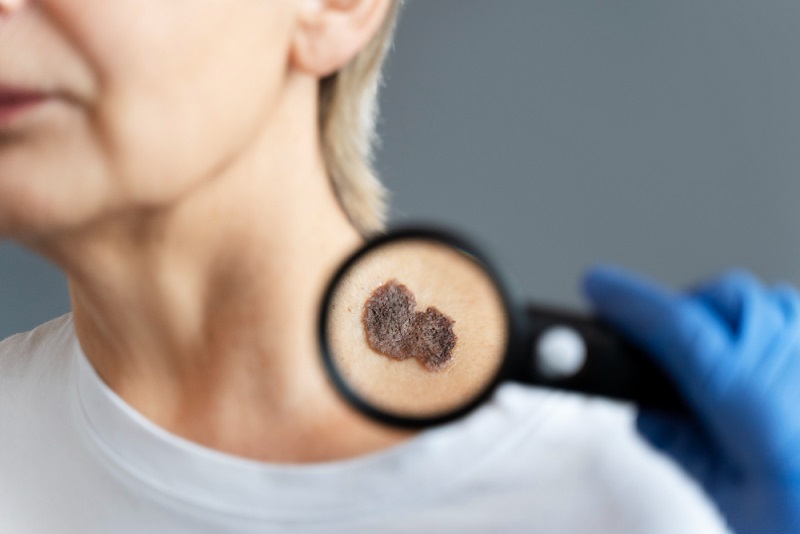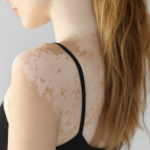A skin mole is a small dark spot on the skin that can range in size from a few millimeters to several centimeters. Skin moles are usually round or oval and can be raised above the skin’s surface or indented below it. In general, most people have more than five moles on their bodies.
Various factors, including genetics, sun exposure, hormones, and other environmental sources, can cause skin moles. Although most moles are harmless, some may be cancerous or precancerous and should be monitored for size, shape, color, or texture changes. Additionally, people with a family history of skin cancer should take extra care to monitor their moles and consult a doctor if any changes occur.
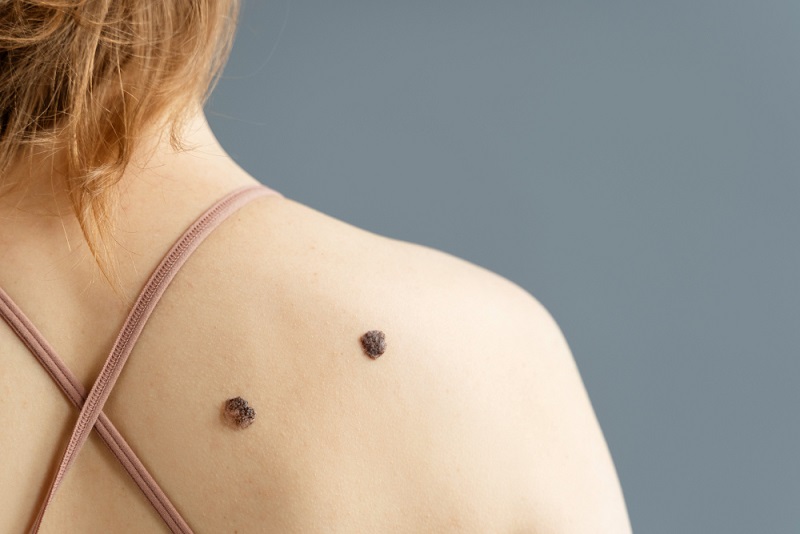
If you notice any new or changing moles on your body, it’s essential to contact your health professional right away. To protect yourself from developing potential skin cancers or precancers in the future, it is always best to practice proper skin safety measures, such as avoiding unprotected sun exposure and using sunscreen. It is also important to check your skin regularly and be aware of any changes in your moles or other marks on your body.
By understanding the causes, risks, and signs associated with skin moles, you can protect yourself from potential health issues and maintain better overall skin health.
What Size Mole Should I Be Worried About?
It is important to note that specific sizes of moles require medical attention. Moles larger than 6mm (1/4 inch) should be checked by a doctor, which may indicate melanoma or other skin cancer. Additionally, any mole that has changed in shape, size, or color should be examined by a doctor. Asymmetrical moles and irregular edges are signs of possible skin cancer and should be discussed with a physician immediately. Other worrisome signs include moles that itch, bleed or scab over. Any mole that exhibits any of these symptoms requires medical evaluation as soon as possible. It is also important to keep track of changes in existing moles, even if they appear normal. Taking pictures of moles every few months can help you track changes over time and more quickly identify when a mole is changing.
If you are concerned about any of your moles, it’s essential to seek medical attention immediately. A doctor can assess the risk and advise on proceeding with further testing if necessary. Early detection increases the chance of successful treatment, so it’s always better to err on the side of caution and involve a doctor in any mole assessment or evaluation.
What Is One Of The Signs That A Mole Has Become Cancerous?
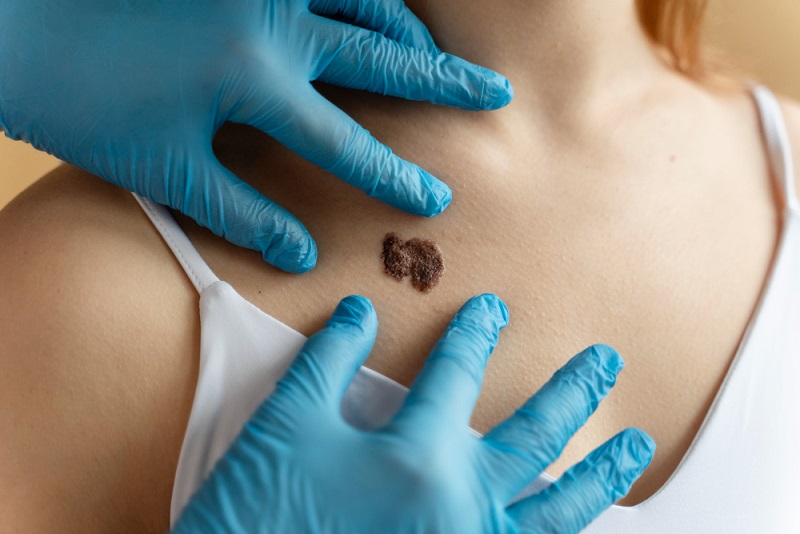
One of the signs that a mole has become cancerous is the presence of irregular borders or edges. Normal moles usually have smooth and even borders, while cancerous moles often have ragged, blurred, or notched borders. Other warning signs of a potentially cancerous mole include changes in size, shape, or color and the presence of itching, bleeding, or oozing. If you notice any of these changes in a mole, it is vital to have it evaluated by a dermatologist as soon as possible.
When Should You Get Moles Checked Out?
Moles should be checked out if they change in size, shape, or color. For example, a mole that is becoming darker or more raised than the other moles on your body could be a sign of skin cancer and should immediately be examined by a doctor. Likewise, moles that become itchy, bleed, or ooze fluid also requires immediate medical attention.
In addition to this, people should get their moles checked every year during their annual physical as part of a regular health screening. People with more than 50 moles may need to get them checked more frequently. If you have any concerns about your moles, talk to your doctor for further guidance.
Can A Dermatologist Diagnose If A Mole Is Cancerous Just By Looking At Ii?
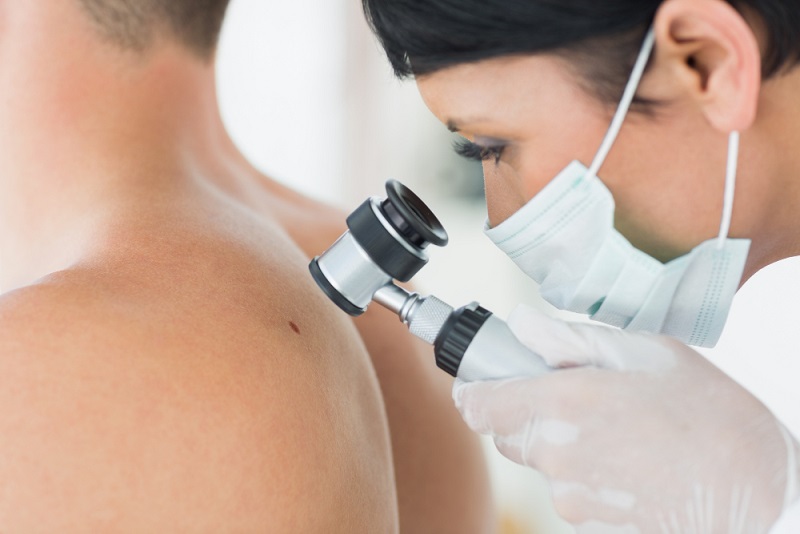
A dermatologist can visually examine a mole and assess its likelihood of cancer. However, in many cases, a dermatologist may need to perform a biopsy to confirm the presence of cancer cells. During a biopsy, a small tissue sample is removed from the mole and examined under a microscope to determine if it is cancerous.
If a dermatologist suspects a mole may be cancerous, they may recommend a biopsy or other diagnostic tests, such as a dermoscopy or imaging studies, to confirm the diagnosis.
What Will Dermatologists Do With Suspicious Moles?
If a dermatologist suspects a mole may be cancerous or atypical, they perform an excisional biopsy to remove the entire mole. This procedure involves freezing the skin with local anesthesia, cutting out the mole, and stitching (or gluing) the skin back together. The mole is then sent to a laboratory for testing. Other biopsies, such as punch biopsies or shave biopsies, may also be performed depending on the type of suspicious lesion. After examining the results of the tests in the lab, your dermatologist can provide you with further information regarding the next steps. In some cases, additional treatment, such as Mohs surgery, cryotherapy, or topical therapy, may be necessary. Again, your dermatologist will be able to discuss the most appropriate treatment for your condition.
In some cases, a suspicious mole may not require any treatment but rather just regular monitoring and checkups. Your dermatologist can provide more information regarding this option as well. However, it is essential to remember that a professional should check all moles to monitor them for any changes or growths that might indicate skin cancer. Early detection and diagnosis are vital in treating skin cancer and can make all the difference between a successful recovery and serious complications.
This article is only educational and should not replace medical advice. If you are concerned about a mole or other skin condition, don’t hesitate to contact your local dermatologist for an evaluation.
For more information or to book an appointment, visit our website at www.simcoderm.com or (705) 503-6333. Our knowledgeable and experienced dermatologists at SimcoDerm Medical and Surgical Dermatology Centre will happily answer any questions or concerns about suspicious moles and provide the most appropriate advice and treatment options for your needs.

